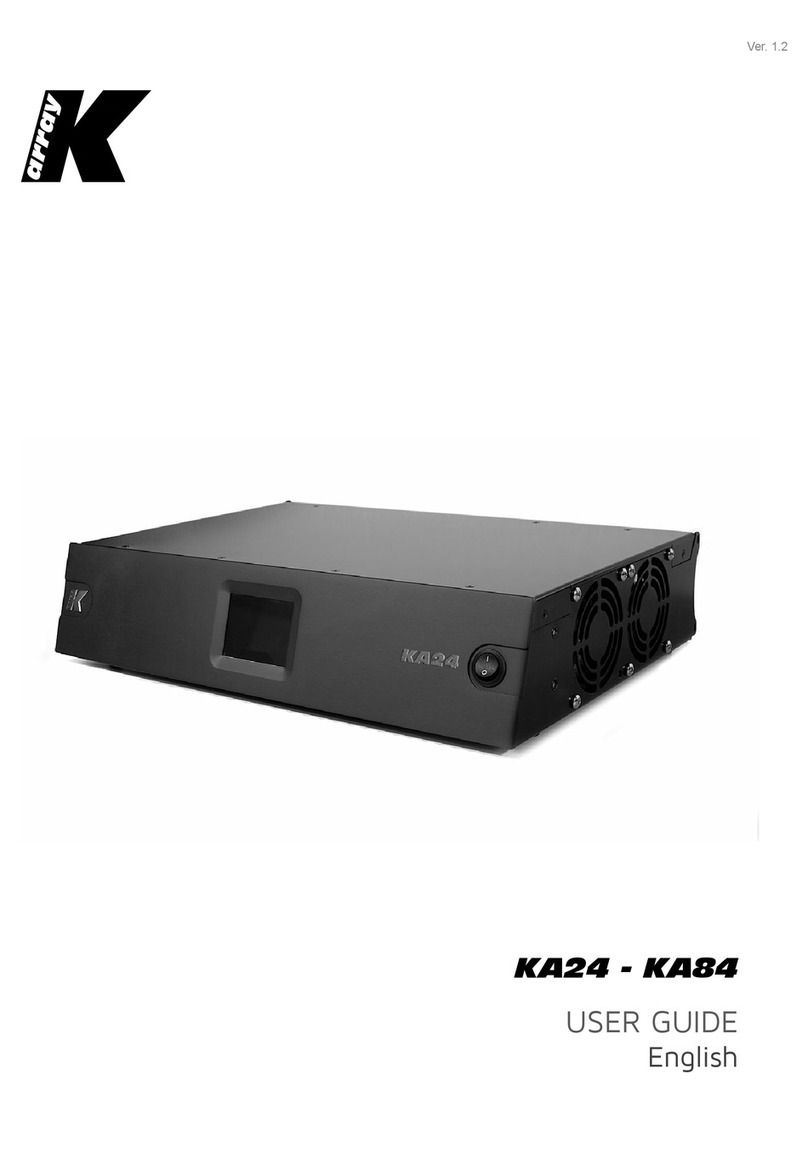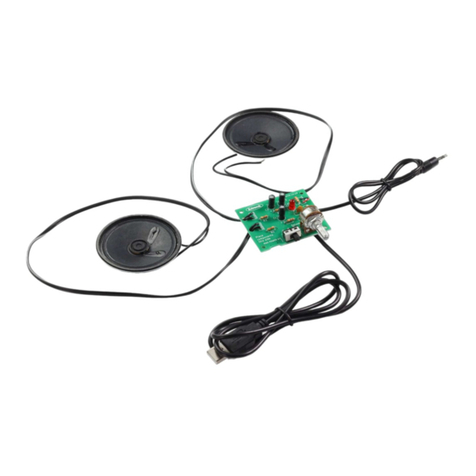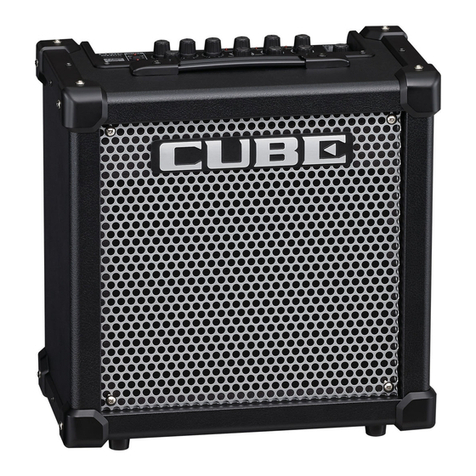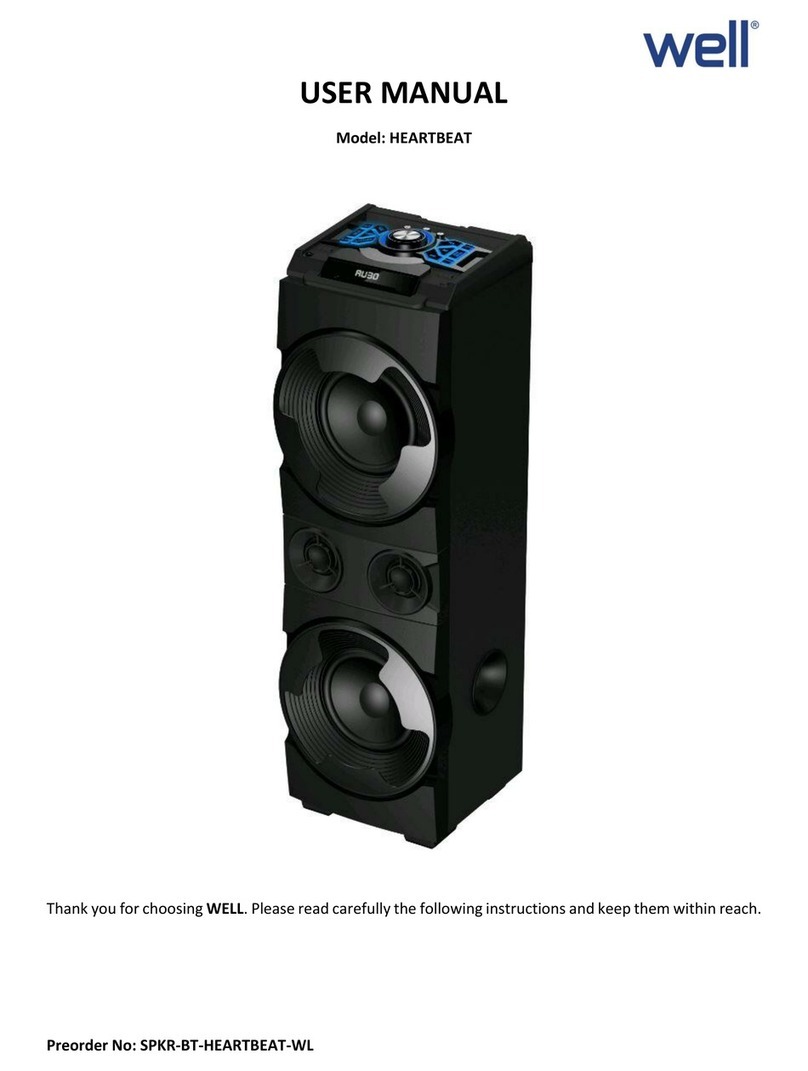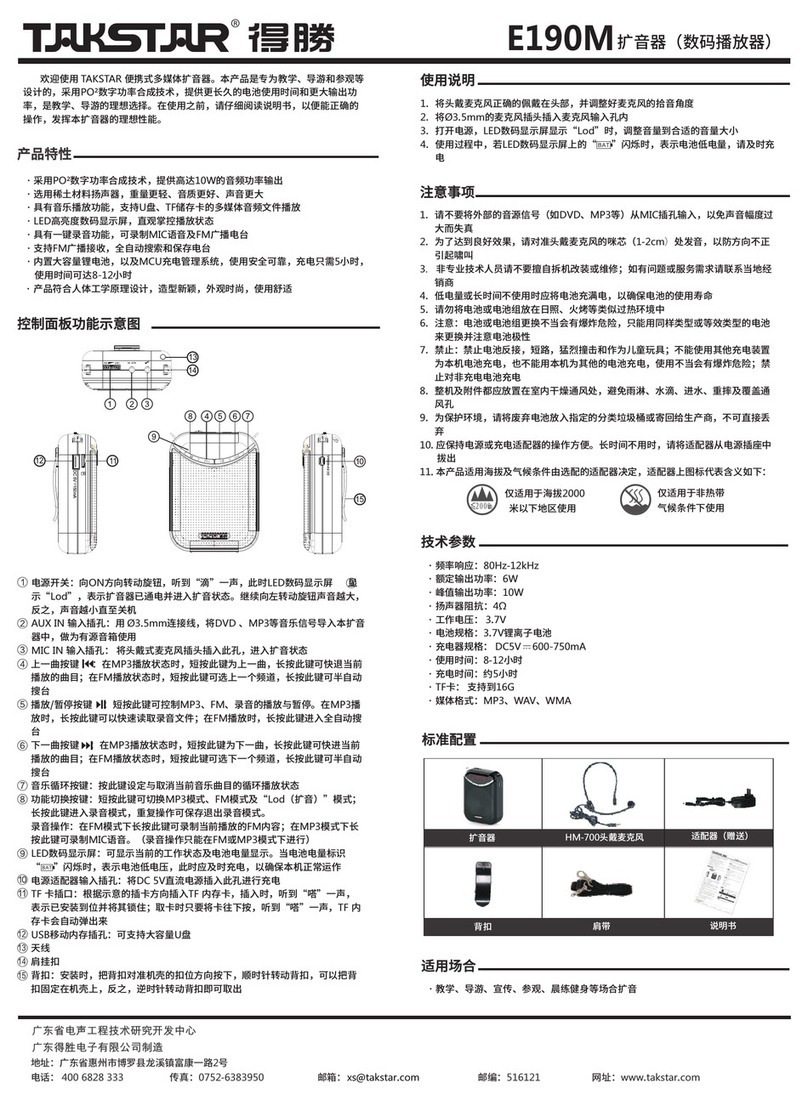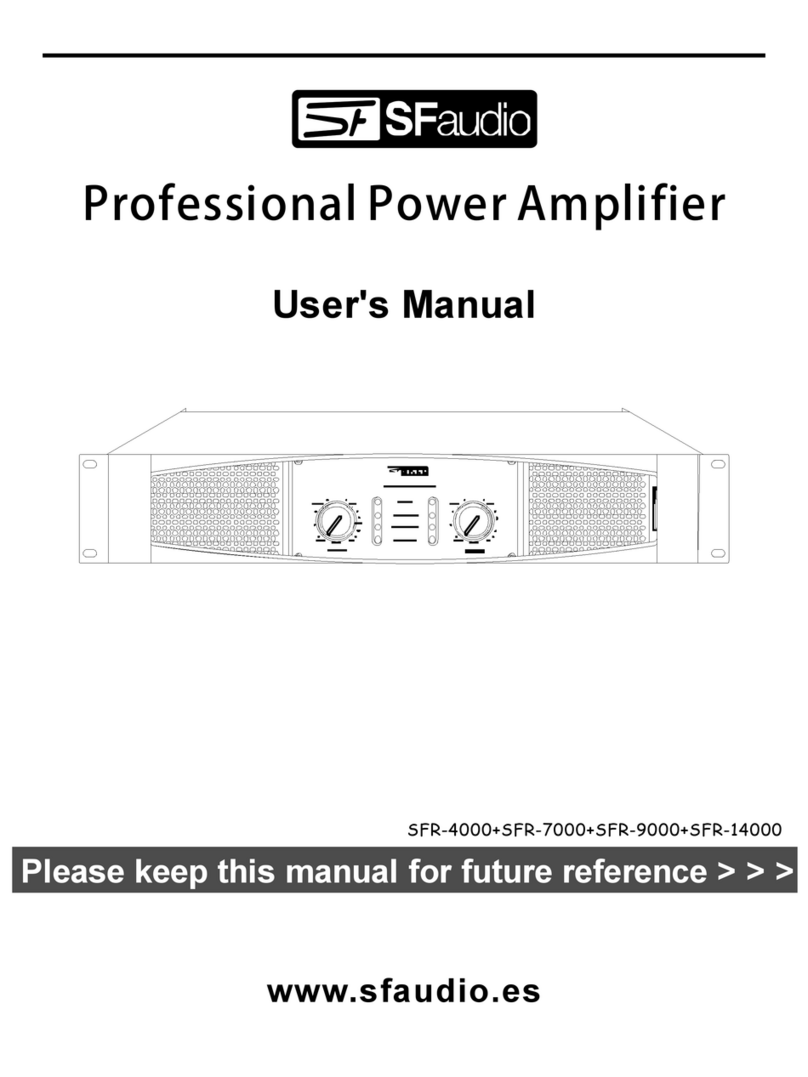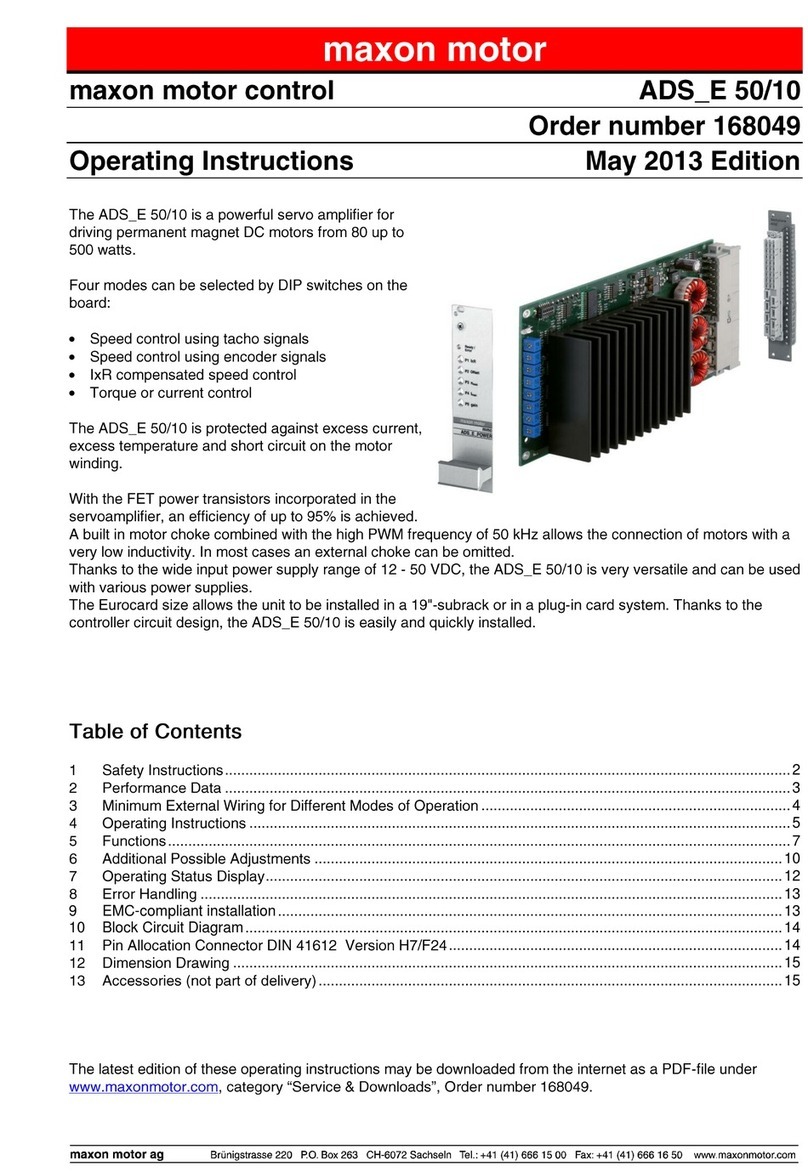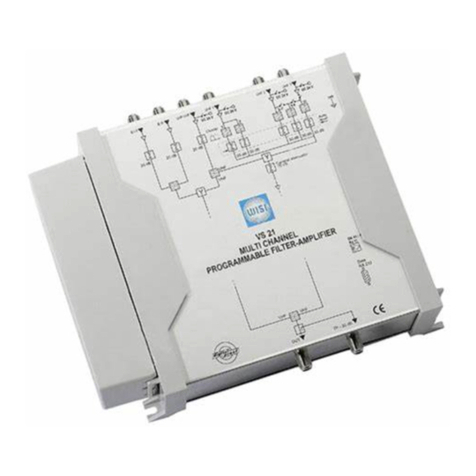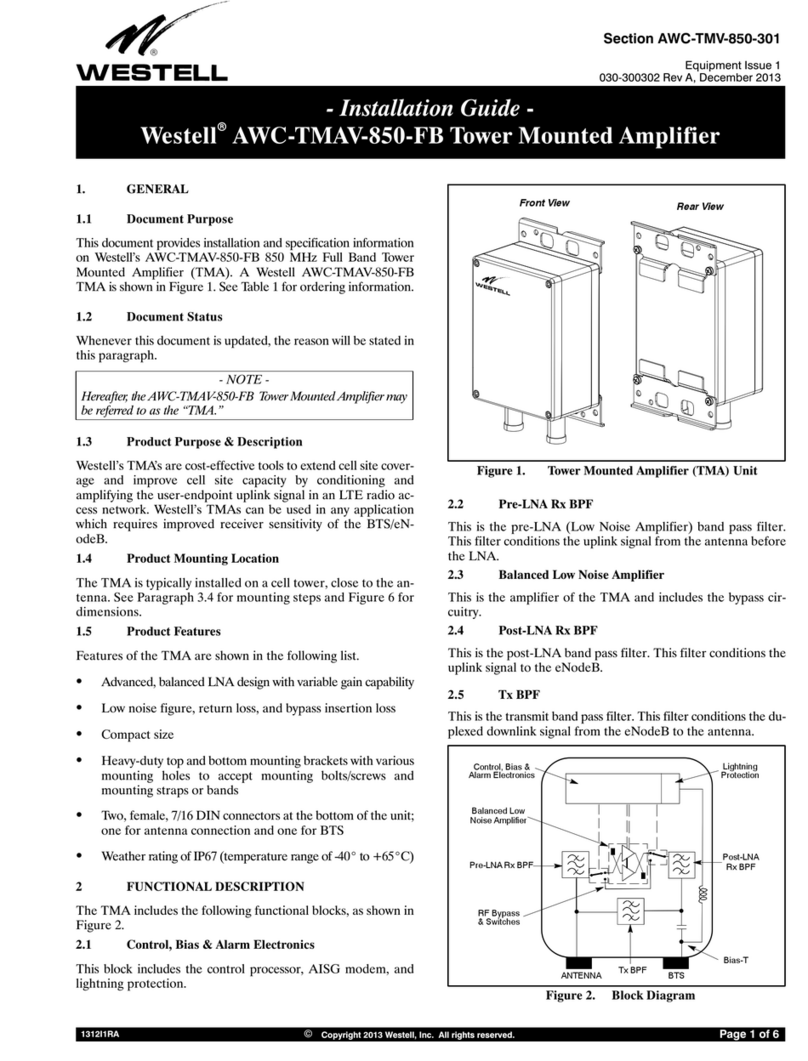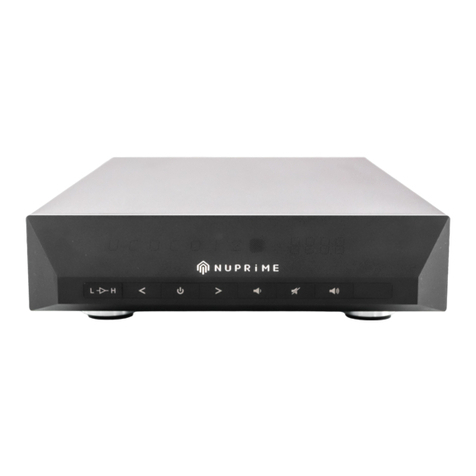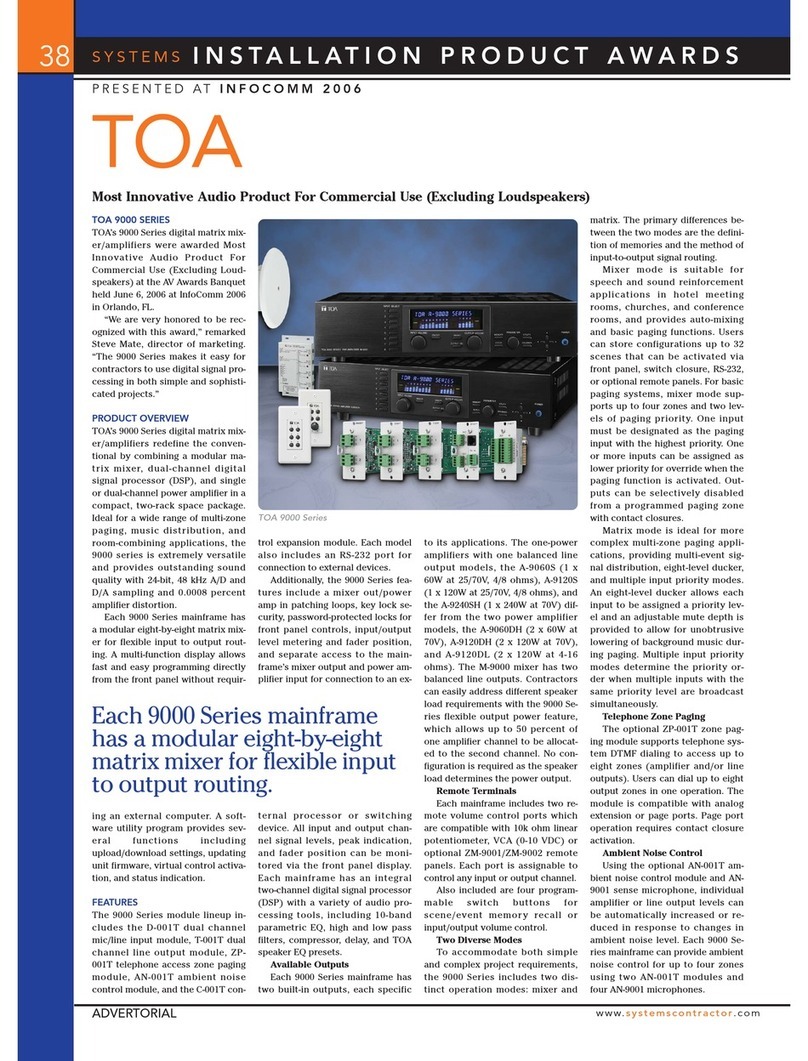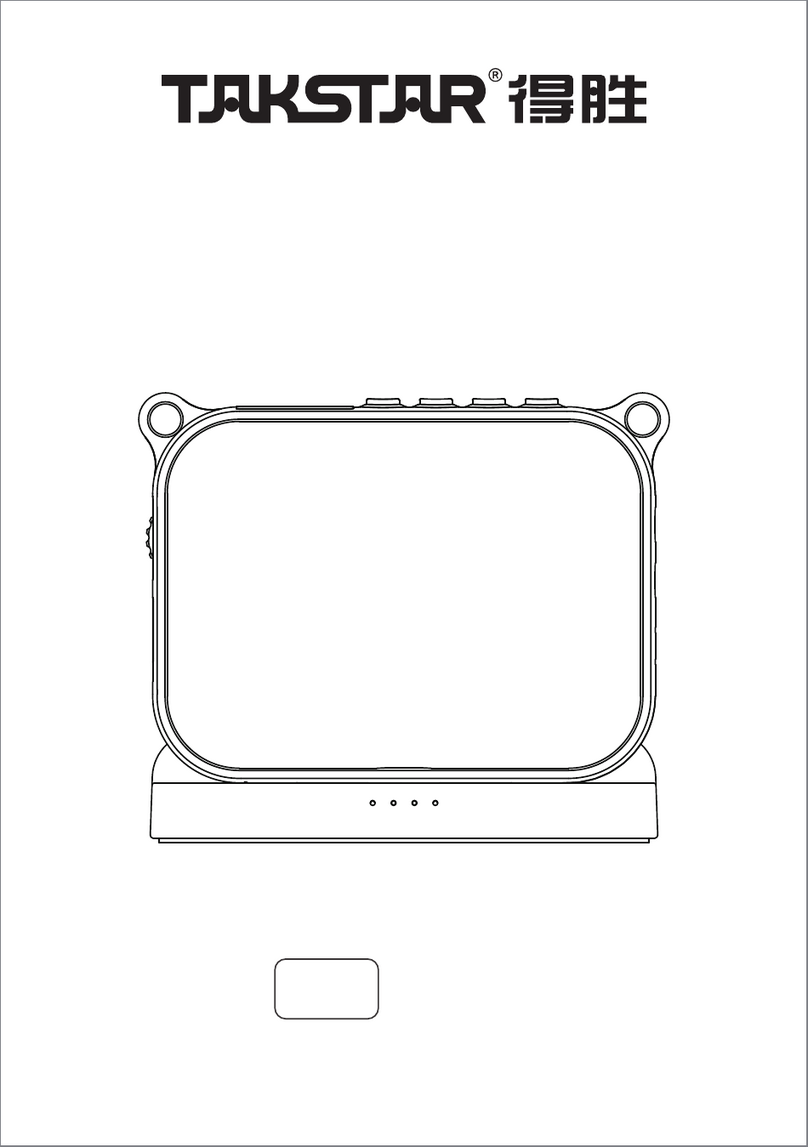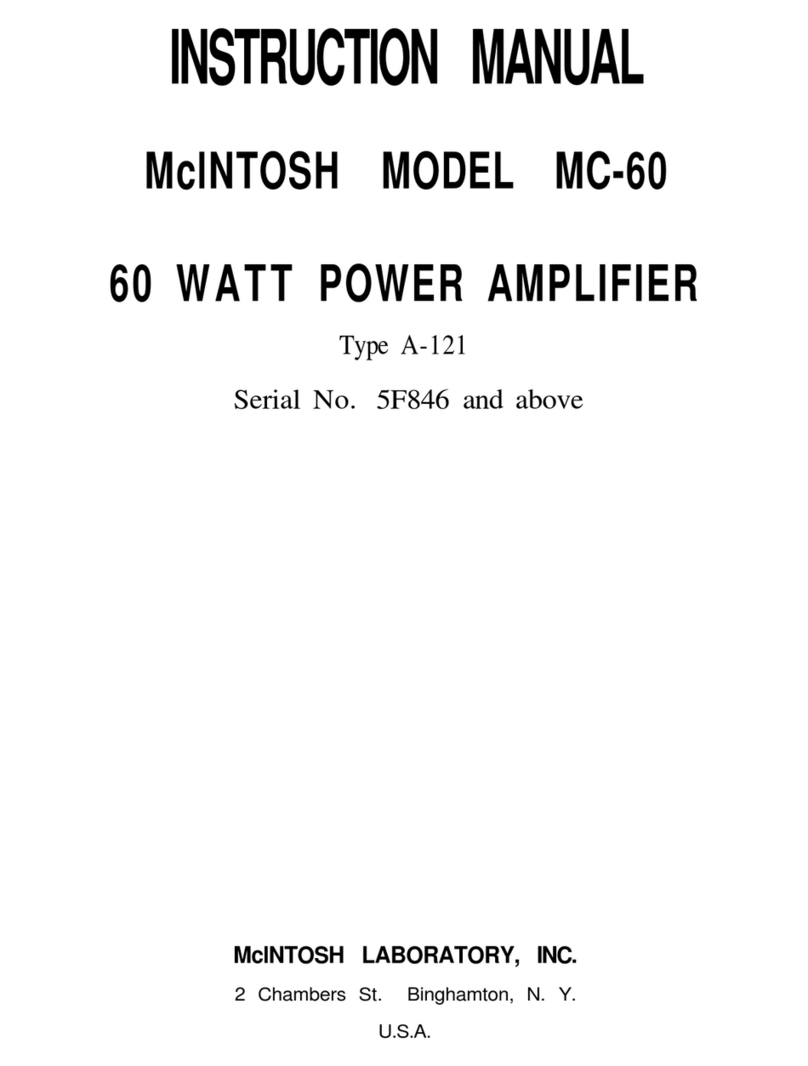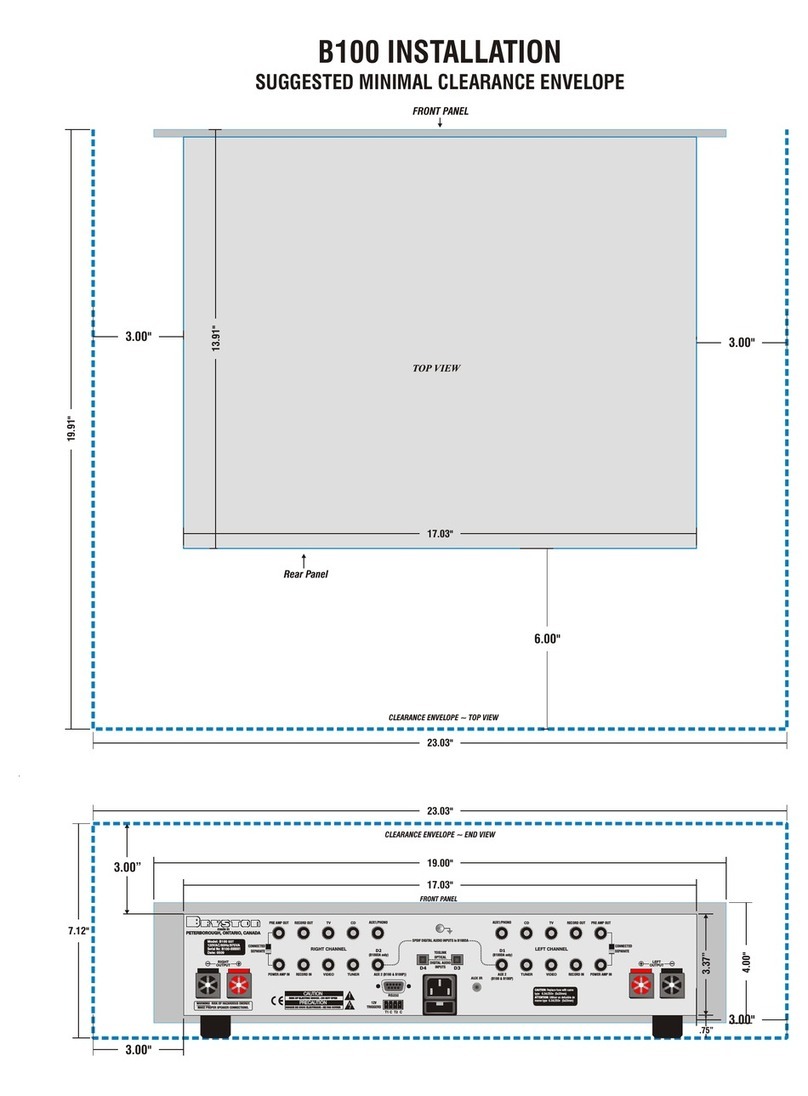K-array KA14 User manual

Ver. 1.2
KA14
USER GUIDE
English

KA14
2
Ver. 1.2
TABLE of CoNTENTS
SYMBoLS ................................................................................ 3
1. INTRoDUCTIoN ..................................................................... 4
2. KEY fEATURES ...................................................................... 4
3. APPLICATIoNS....................................................................... 4
4. SAfETY INfoRMATIoN............................................................ 5
5. UNPACKING ......................................................................... 6
6. INCLUDED ACCESSoRIES ......................................................... 6
7. PhYSICAL ovERvIEw .............................................................. 7
8. INSTALLATIoN....................................................................... 8
9. voLTAGE AND CURRENT REQUIREMENTS ................................... 9
9.1 voLTAGE REQUIREMENT ....................................................................... 9
9.2 CURRENT REQUIREMENT ...................................................................... 9
10. BACK PANEL.......................................................................10
11. SIGNAL fLow...................................................................... 11
12. ToUCh SCREEN fUNCTIoNS .................................................. 13
13. REMoTE CoNTRoL............................................................... 15
14. SERvICE ............................................................................16
15. SPECIfICATIoNS .................................................................. 17

KA14
3
Ver. 1.2
This symbol alerts the user to the presence of recommendations about the
product’s use and maintenance.
K-array declares that this device is in compliance with applicable CE
standards and regulations. Before putting the device into operation, please
observe the respective country-specific regulations!
Waste Electrical and Electronic Equipment (WEEE)
Please dispose of this product at the end of its operational lifetime by bringing
it to your local collection point or recycling center for such equipment.
This device complies with Restriction of Hazardous Substances Directive.
SYMBoLS
Warning: DANGEROUS VOLTAGE.
Terminals marked with this symbol carry a risk of electric shock, therefore
external wiring connected to these terminals requires installation by a
qualified professional or the use of ready-made leads or cords.

KA14
4
Ver. 1.2
1. INTRoDUCTIoN
The KA14 is a versatile amplifier, easily adaptable for small applications that do not require a lot of
power. Responding to the needs for a simple solution for those who do not have a lot of additional
resources, the KA14 is a complete system with a mixer, processor and amplifier.
The KA14 features four fully independent and configurable output channels (4 x 300 W @ 4 Ω). The
integrated DSP offers EQ, Matrix, Levels, Delays and a Limiter to avoid the need for external additional
processors. The front panel has an easy-to-use touchscreen that gives access to all the basic functions
for quick setup and corrections. The KA14 can be used as a mixer for fixed installations thanks to the
XLR and RCA analog inputs.
An onboard library preset with K-array speaker provides configuration for endless combinations of
the Lyzard, Vyper, Tornado and Rumble loudspeakers. All DSP functions are remote controlled via the
K-framework software.
The amplifier is built into a 2U lightweight, aluminum chassis and comes with a kit of removable rack
adapters and four rubber pads for flat surfaces. KA amplifiers feature optical limiters and protection
against overheating, overcurrent and short circuits.
2. KEY fEATURES
• 1000 W in just 2 rack units
• XLR and RCA Inputs
• 4 independent fully configurable outputs
• Integrated DSP with processing, matrix and
delays
• Onboard touch screen for easy access functions
• K-array loudspeakers presets already on board
• USB connectivity for remote control
• Optimized for Lyzard, Vyper, Tornado and
Rumble speakers
• Restaurants, Lounges, Shops
• Exhibit audio for museum displays
• Portable and Installed AV systems
3. APPLICATIoNS

KA14
5
Ver. 1.2
This symbol alerts the user to the presence of
recommendations about the product’s use and
maintenance.
Read these instructions - Keep these instructions - Heed all warnings
The lighting flash with arrowhead symbol within
an equilateral triangle is intended to alert the
user to the presence of uninsulated, dangerous
voltage within the product enclosure that may
be of magnitude to constitute a risk of electrical
shock.
4. SAfETY INfoRMATIoN
Warning: Failure to follow these safety instructions could result in fire,
shock or other injury or damage to the device or other property.
IMPORTANT SAFETY INSTRUCTIONS
• Follow all instructions.
• Do not use this apparatus near water.
• Clean only with a dry cloth.
• Do not block any ventilation openings. Install in accordance with the manufacturer’s instructions.
• Do not install near any heat sources such as radiators, heat registers, stoves, or other apparatus
(including amplifiers) that produce heat.
• Do not obstruct the safety purpose of the polarized or grounding-type plug. A polarized plug has two
blades with one wider than the other. A grounding type plug has two blades and a third grounding
prong. The wide blade or the third prong is provided for your safety. If the provided plug does not
fit into your outlet, consult an electrician for replacement of the obsolete outlet.
• Protect the power cord from being walked on or pinched particularly at the plug, convenience
receptacles, and the point where they exit from the apparatus.
• Only use attachments/accessories specified by the manufacturer.
• Use only with the cart, stand, tripod, bracket, or table specified by the manufacturer, or sold with the
apparatus.
• When a cart is used, use caution when moving the cart/apparatus combination to avoid injury from
tip-over.
• Unplug this apparatus during lightning storms or when unused for long periods of time.
• Refer all servicing to qualified service personnel. Servicing is required when the apparatus
has been damaged in any way, such as power-supply cord or plug is damaged, liquid has
been spilled or objects have fallen into the apparatus, the apparatus has been exposed to rain or
moisture, does not operate normally, or has been dropped.

KA14
6
Ver. 1.2
5. UNPACKING
Each K-array amplifier is built to the highest
standard and is thoroughly inspected before
leaving the factory. Upon arrival, carefully inspect
the shipping carton, then examine and test your
new amplifier. If you find any damage, immediately
notify the shipping company. Only the consignee
may institute a claim procedure regarding the
system’s electronic equipment.
6. INCLUDED ACCESSoRIES
• Power cable
• USB cable
• Rubber pads for flat surfaces installation
• Rack brackets
wARNING
• Since the device is a CLASS I apparatus, it must be only connected to an AC three-wire grounding outlet.
If your outlet isn’t grounded, contact a licensed electrician to replace it with a property grounded
outlet.
• To reduce the risk of electric shock, disconnect the amplifier from the AC mains power before installing
audio cable. Reconnect the power cord only after making all signal connections. Do not use the product
if the power cord is broken or frayed. Protect the power cord from being walked upon or pinched.
• To completely disconnect this apparatus from the ac mains, disconnect the power supply cord plug
from the ac mains connector.
• Voltage requirement. Make sure that the supplied voltage stays within the specified range. Verify that
your mains connection satisfies the power ratings of the device.
• Only connect the power supply to an appropriate power outlet.
• Do not install the amplifier in wet or humid locations without using weather protection.
• TO REDUCE THE RISK OF FIRE OR ELECTRIC SHOCK, do not expose this apparatus to rain or moisture
and objects filled with liquids, such as vases, should not be placed on this apparatus.
• The main plug of the power supply cord shall remain readily accessible.
CAUTION
• Choking Hazards. This device contains small parts, which may present a choking hazard to small
children. Keep the device and its accessories away from small children.
• Temperature. Operate the device in a place where the temperature is between -20°C and 35°C (-4°F
to 95° F). Avoid dramatic changes in temperature or humidity when using it, as condensation may
form on or within the device.
• Do not make repairs yourself. Caution, risk of electric shock. Do not open the device, it contains
potentially hazardous voltage. Never attempt to disassemble, repair or modify the system yourself.
Disassembling the unit may cause damage that is not covered under the warranty. The device contains
no user-serviceable parts. Repairs should only be performed by factory trained service personnel. Do
not plug the power cord in if you suspect that your device needs service or repair.

KA14
7
Ver. 1.2
7. PhYSICAL ovERvIEw
Weight
3.8 kg (8.0 lbs)
19in
481mm
17in
430mm
4in
94mm
12in
305mm
12in
295mm

KA14
8
Ver. 1.2
8. INSTALLATIoN
The KA14 is the height of two rack units (2U) and can be mounted in an EIA-standard 19’’ rack using
two rack adapters (included). In case of installation on a flat surface, use the four rubber pads included.
To maintain a low and even operating temperature, the amplifier contains two fans on the right side.
The figure below shows the air flow:
WARNING:
For effective cooling, do not obstruct the ventilation openings.

KA14
9
Ver. 1.2
9. voLTAGE AND CURRENT REQUIREMENTS
The amplifier module and any audio equipment connected to it (mixing consoles, processors, etc.) must
be properly connected to the AC power distribution, preserving AC line polarity. Every grounding point
must be connected to a single node or common point using the same cable gauge as the neutral and
line cable. Bad grounding connections between speakers and the rest of the equipment may produce
noise, hum or serious damage to the input/output stages in the system’s electronic equipment.
Before applying AC to any K-array self-powered speaker, be sure
that the voltage potential difference between neutral and earth
ground is less than 5 VAC.
9.1 voLTAGE REQUIREMENT
The KA14 accommodates AC mains power operating at either 115 V or 230 V. The amplifier will continue
to operate safely, without interruption, provided the AC voltage remains within a nominal range of 100 -
240 V (operating range 85 - 264 V) at 50 to 60 Hz.
Please verify that your AC mains power connection is capable of satisfying the power rating for the device.
CAUTION: Do not connect the system to the AC mains power
exceeding 265 V. Doing so will cause significant damage to the
device and create serious risk for users!
9.2 CURRENT REQUIREMENT
The amplifier presents a dynamic load to the AC mains power, drawing additional current as operating
levels increase. Different cables and circuit breakers heat up at varying rates, so it is essential to
understand current ratings and how they correspond to circuit breaker and cable specifications. Maximum
continuous RMS current - measured over a period of at least ten seconds - is used to calculate the
temperature increase in cables, which drives the proper size and gauge cable and rating for slow-
reacting thermal breakers. Maximum burst RMS current - measured over a period of approximately one
second - is used to select the rating for fast-reacting magnetic breakers.
For best performance, voltage drops should not exceed 10% at 100 V or 10% at 230 V. The minimum
electrical service amperage required by a K-array loudspeakers system is the sum of their maximum
continuous RMS currents. K-array recommends allowing an additional 30% above the minimum amperage
to prevent peak voltage drops at the service entry.

KA14
10
Ver. 1.2
L
R
REC
OUT
10. BACK PANEL
1 32
4
5 6 7
8 9
1. AC INPUT. Power socket IEC 320 C14.
2. POWER ON LED. Indicates the amplifier is ON.
3. XLR MIC/LINE INPUTS. Female balanced XLR analog inputs, with selectable sensitivity for Mic (-30
dBu) or Line (+4 dBu). These two inputs accept balanced, low impedance audio signals which allow
the use of long cable runs (>10mt), without losing the quality of the signal.
4. MIC/LINE SWITCHES. Select XLR input sensitivity for Mic (pressed) or Line (depressed) level.
5. RCA INPUTS. Female unbalanced RCA analog inputs. These connections are the standard for
consumer devices such as CD/DVD readers, portable devices, personal computers..
The two channels of each RCA input are completely independent. They can be used to connect the
Left and Right channels of a stereo source, or two independent mono sources.
Please note that the three RCA inputs are wired in parallel, i.e their signals are summed before being
processed.
6. RCA OUTPUTS. Female unbalanced analog RCA outputs.
7. POWER OUTPUTS. Speakon NL4 outputs to drive passive speakers (see wiring diagram below).
8. REMOTE USB INPUT. Connects a computer running the K-Framework software, for remote control
of the amplifier.
9. RS485 INPUT. Phoenix 4-pin input for remote control of the amplifier via RS485 protocol. Do not
connect the KA-POT1 accessory to this input.
2+
1+
2-
1-
SPEAKON OUT A
2+
1+
2-
1-
SPEAKON OUT B
Speakon wiring diagram

KA14
11
Ver. 1.2
11. SIGNAL fLow
The KA14 features two independent input processing channels (CH1 and CH2) and four independent
output processing channels (A1, A2, B1, B2).
The physical inputs (XLR 1, XLR 2, RCA L and RCA R) can be assigned to any input processing channel
thanks to the
Input Matrix
. In the
Input Matrix
, it is also possible to assign any physical input to any RCA
output (RCA OUT L or RCA OUT R).
Please note that the three RCA inputs are wired in parallel. If more the one device is connected to the
RCA inputs and play simultaneously, their signals are summed.
Please note also that the two channels of each RCA input are completely independent. They can be
used to connect the Left and Right channels of a stereo source, or two independent mono sources.
RCA OUTPUT L RCA OUTPUT R CH 1 CH 2
XLR INPUT 1 X X
XLR INPUT 2 X X
RCA INPUT L X X
RCA INPUT R X X
Physical Inputs
Processing InputsRCA Outputs
Input Matrix - Default settings
LEVEL
INPUT
MATRIX
USER
EQ
OUTPUT
MATRIX
øCHANNEL PRESET
XLR IN 1
LEVEL
XLR IN 2
RCA R
RCA L
LEVEL
LEVEL DEL AY LEVEL
øCHANNEL PRESET
DEL AY LEVEL
øCHANNEL PRESET
LEVEL
øCHANNEL PRESET
LEVEL A1
A2
B1
B2
RCA OUT R
RCA OUT L
KA14 Signal-flow

KA14
12
Ver. 1.2
The processing input channels CH1 and CH2 can be independently equalized via the K-framework software,
then they can be routed to any output channel (A1, A2, B1, B2) thanks to the
Output Matrix
. The user
can adjust the level of the four output channels independently. If necessary, the phase can be inverted
on each output channel.
It is also possible to add e delay (up to 6ms) on the output channels B1 and B2.
A1 A2 B1 B2
CH1 X X
CH2 X X
Output Matrix - Default settings

KA14
13
Ver. 1.2
12. ToUCh SCREEN fUNCTIoNS
The main functions of the onboard DSP can be managed with the integrated touch screen. Functions are
grouped into six pages, shown as icons on the Home page.
To reach the homepage
from any other page,
touch the
Home
button.
hoME PAGE
LEvELS
The
Levels page
allows users to independently manage
the amplitude of the XLR and RCA input channels and all
the four output channels.
Click the arrow button on the top right corner to switch
between
Input levels page
and
Output levels page
.
MATRIX
The
Matrix page
allow users to manage the routing of the
two input channels to the four output channels.
Remember that, by default, the XLR 1 and RCA L physical
inputs are routed to the CH1 input channel, while the
XLR 2 and RCA R physical inputs are routed to the CH2
input channel (see Chapter 12). If you would like to
change these settings, connect a computer running the
K-framework
software and follow the instructions you
find in the
K-Framework User Guide
.

KA14
14
Ver. 1.2
DEL AY
The
Delay page
allows users to independently set the
delays for the B1 and B2 output channels (up to 6 m).
The delays are available on these outputs because they
are often used to realign the subwoofers (connected
to the B1 and B2 outputs) with the mid-high speakers
(connected to the A1 and A2 outputs).
CoNfIGURATIoN
Before connecting the speakers to the amplifier, follow
the instructions below.
Warning. Failure to follow these instructions
could result in serious damage to the
speakers connected to the amplifier!
Go to the
Configuration page
and press the SETUP
button. Insert the model and the number of speakers
connected to Output A1 (one KV50 in the example on
the left). Press the arrow button on the top right corner.
Insert the model and the number of speakers you want
to match to the previous ones. For example, if you have
one KV50 mid-high array connected to the A1 output
and a KU26 sub connected to another output (or to
another amplifier) select KU26 to the
A1 Out Match page
and the DSP will automatically compute the crossover
setting to obtain a perfect match between the speakers.
Press the arrow button on the top right corner. Repeat
Step 2 and 3 for all other outputs. At the end you
will return to the main
Configuration page
. Press APPLY
to load all settings. The DSP will automatically adjust
the parameters on each output channel to match the
requirement for the speakers connected.
Warning: If you are using speakers with selectable impedance, pay
attention to set the value indicated in the Configuration page!

KA14
15
Ver. 1.2
13. REMoTE CoNTRoL
All amplifier functions, including signal routing, output configuration, channel equalization and delay can
be controlled via K-Framework software.
To download your free K-Framework software and K-Framework User Guide, please navigate to the
K-array website http://www.k-array.com/software_download
Connect you computer to the USB input of the amplifier using a USB cable.
The amplifier features also 4-pins phoenix connector, for remote control of the amplifier via RS485
protocol. We recommend to use the K-USB accessory as a USB to serial converter. The K-USB allows you
to use a XLR cable or RJ45 cable to connect the computer to the amplifier. To connect the XLR or RJ45
cable to the phoenix connector, please follow the scheme below:
PRESET
The
Preset page
allows users to load presets stored
on-board.
INfo
The
Info page
contains information about the
current software and firmware, and the Board ID
of the amplifier. When connecting the amplifier in
a K-framework network, please make sure that all
devices in the network have different ID numbers.
RS485 connection
1: Ground
2: Data A-
3: Data B+

KA14
16
Ver. 1.2
14. SERvICE
To obtain service:
1) Contact the official K-array distributor in your country. Your local distributor will direct you to the
appropriate service center.
2) If you are calling for service, please have the serial number(s) of the unit(s) available for reference. Ask
for Customer Service, and be prepared to describe the problem clearly and completely.
3) If the problem cannot be resolved over the phone, you may be required to send the unit in for service.
In this instance, you will be provided with an RA (Return Authorization) number which should be
included on all shipping documents and correspondence regarding the repair. Shipping charges are the
responsibility of the purchaser.
Any attempt to modify or replace components of the device will invalidate your warranty. Service must
be performed by an authorized K-array service center.
Cleaning:
Use only a soft, dry cloth to clean the housing. Do not use any solvents, chemicals or
cleaning solutions containing alcohol, ammonia or abrasives. Do not use any sprays near
the product or allow liquids to spill into any openings.

KA14
17
Ver. 1.2
15. SPECIfICATIoNS
Power Output
Output Power @ 4Ω 4 x 300 W(1)
Minimum impedance 4 Ω
Audio specs
Distortion (THD + N) 0.005% typical (1W @ 4Ω)
Bandwidth 20 Hz - 20 kHz (±1 dB)
Input Impedance 47 kΩ
Dynamic Range 113 dB
Nominal Voltage Gain (f =1 kHz) 28.2 dB
Protection
Thermal Yes
Short circuit / overcurrent Yes
DC Output Yes
Audio Input/Output
Input Connectors 2 female 3-pin balanced XLR + 3 stereo female unbalanced RCA
Output Connectors Stereo female unbalanced RCA
Remote control Input
Connectors 1 USB B Jack serial converter
Audio powered Output
Connectors 2 x 4-pin Speakon NL4
NL4 1 wiring 1+1- = A1 | 2+2- = A2
NL4 2 wiring 1+1- = B1 | 2+2- = B2
AC power
Connector 3-pin inlet IEC 320 C14
Nominal voltage 100 - 240 VAC, 50 - 60 Hz
Operating Range 85 - 264 VAC
1/8 rated power (pink noise) @ 4Ω 400 W
Certication
IP 20
Physical
Dimensions 43.0 cm x 29.5 cm x 9.4 cm
(16.9“ x 11.6” x 3.7“)
Weight 3.8 kg (8.0 lbs)
Notes for data
1. EIAJ Test Standard, 1kHz, 1%THD
New materials and design are introduced into existing products without previous notice. Present systems may differ in some
respects from those presented in this catalogue.
The contents of this manual are furnished for informational purposes only. K-array s.u.r.l. assumes no responsibility for any errors or inaccuracies that
may appear in this manual. K-array s.u.r.l. reserves the right to make modifications without prior notice.
Table of contents
Other K-array Amplifier manuals
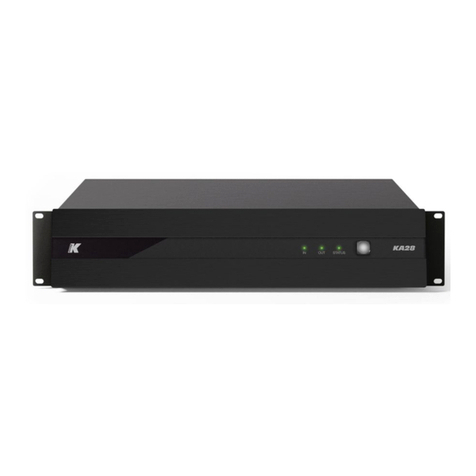
K-array
K-array Kommander-KA Series User manual
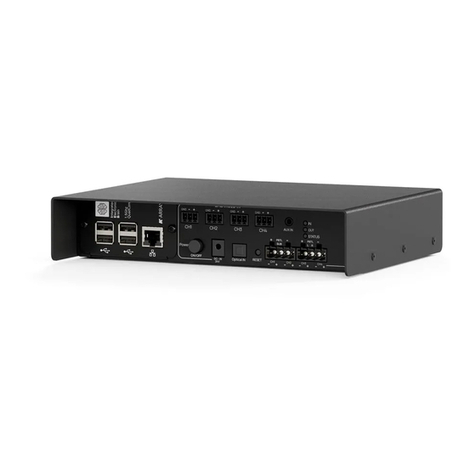
K-array
K-array Kommander-KA02 User manual

K-array
K-array KA10 User manual
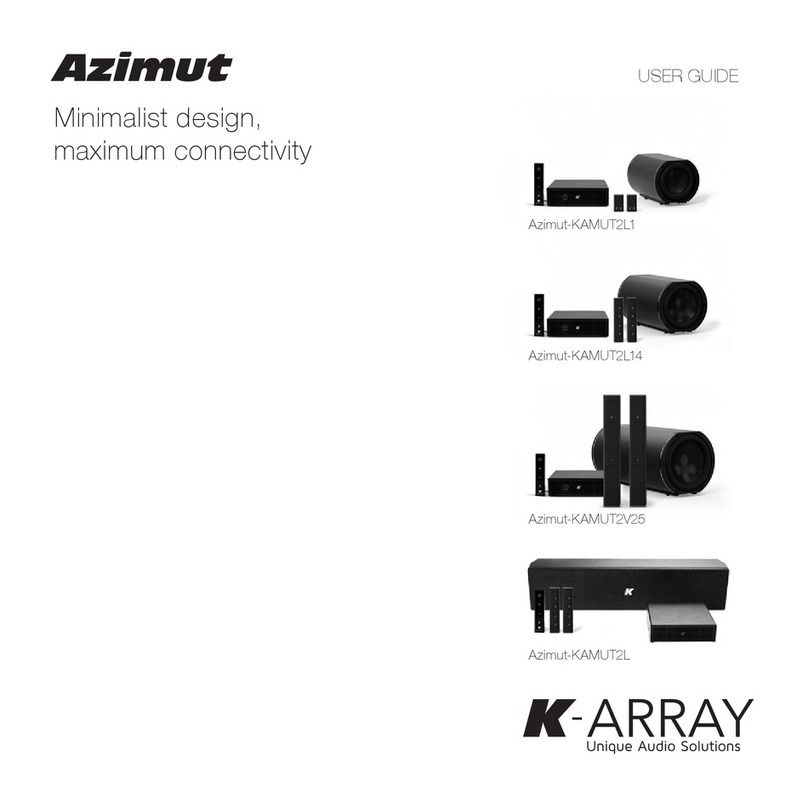
K-array
K-array Azimut Series User manual

K-array
K-array Kommander-KA04 User manual

K-array
K-array KA10-10 User manual
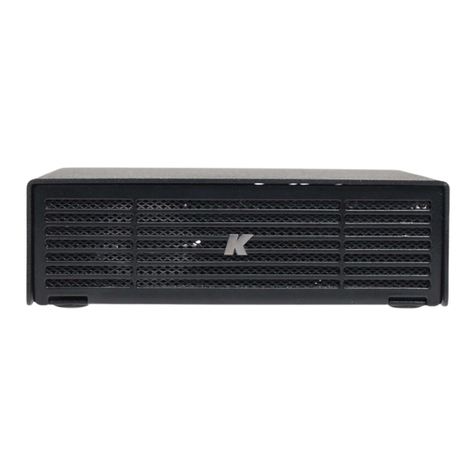
K-array
K-array Kommander-KA02 User manual
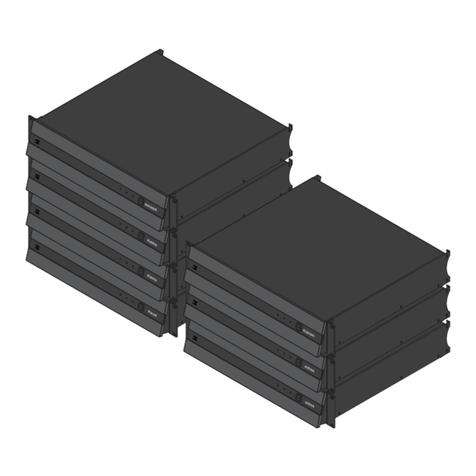
K-array
K-array Kommander-KA User manual

K-array
K-array KA7 User manual

K-array
K-array KA40 User manual

